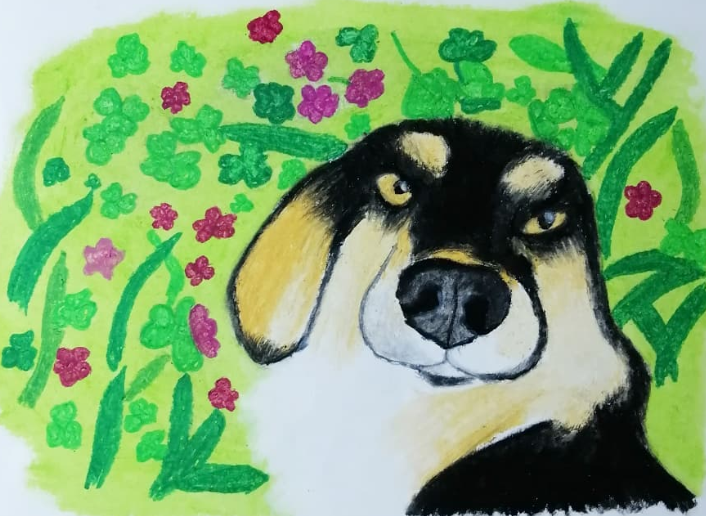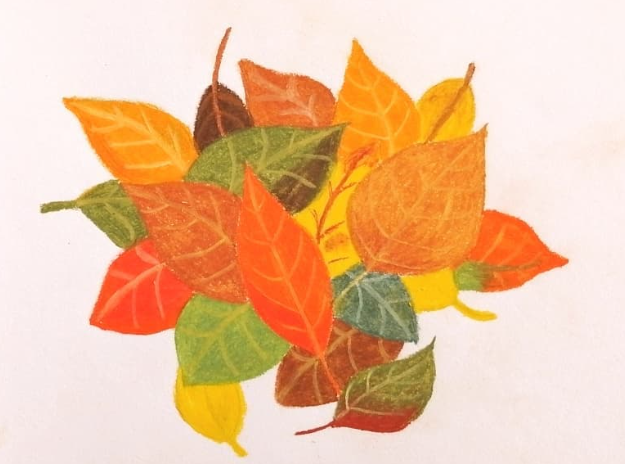When I started to enter the art world, I didn't even know that there were differences between oil pastels and soft pastels. This can happen to anyone who is still discovering the materials. So, I wanted to buy oil pastels. I looked around and found soft pastels for sale. Well, I didn't pay much attention to what was written on the box… When I got home, I tried the materials and was confused: wasn't it supposed to be oily? Yeah, it even made me want to laugh at the time. However, thanks to this mistake I learned the difference between oil pastels and soft pastels. Let's see.
Dry pastels or soft pastels
So, I start by explaining what the famous soft pastels that I bought by mistake are. They have a texture very similar to chalk, which confused me when I was not familiar with this material. They are composed of pigment and gum binder. There are different formats:
- Soft pastels: as the name says, they are softer, with less gum and more pigment.
- Hard pastels: have greater gum composition, which makes them more rigid, being useful for creating more precise details.
- Pencils: they lower the risk of getting your hands dirty, as well as offering greater control and agility when painting.

How to use soft pastels?
This material is used to achieve soft tones, gradients and smoky details. This smoky effect can be done with your fingers. Actually, I recommend you using your fingers to work the gradients or smoky with soft pastels, because it will look much better.
Also, it can be used on any type of paper. However, it is difficult to erase without leaving a trace due to its strong pigmentation.
What care should I take?
First, dry pastels, especially soft pastels, create a lot of dust. So, the first instinct we have is to blow the dust… wrong! I used to do that too, but it can cause respiratory problems, especially for people with allergies, because the dust stays in the air. So, it's a good idea to use a device that vacuums the powder, or you can do it like I do: I use soft pastels a lot to make gradients, so I use the powder to blur the gradients with my fingers.
Secondly, if you want to mix colors, which is the case with gradients, always clean the tip of the pastel, because it will be “contaminated” with other colors. If you don't clean it, it will create interference from the color left on the tip.
Another important tip is to always keep a damp cloth around. When using soft pastels, the fingers are colored and it's a good idea to clean them so that the colors don't move from one chalk to another.
Finally, dry pastels don’t stick well to the paper, so if you run your finger over the drawing, it can smudge and stain your fingers. Thus, it is recommended to use a fixative spray so that this does not happen. Sometimes, it may not be well fixed the first time, but it doesn't matter, you can spray it a second time.
Oil Pastels
The oil pastels give more shine to the painting, and its texture is a little similar to wax crayons. They are more resistant materials, which do not break as easily as soft pastels, as well as do not create dust.
As they are materials composed of an oil-based binder, they allow you to create works of art similar to oil paintings. The tones are vibrant and intense, being suitable for covering lighter areas.

How to use oil pastel?
They are very useful for sketching and non-detailed work. The more pressure you apply to the oil pastel, the stronger and opaquer the color will be. You can create finer or thicker lines by controlling with the tip of the chalk.
If you want to create gradients, that's also possible, but a little more difficult. You cannot use your finger to blend unless the material is very creamy. That's why I usually use some kitchen paper to help create the gradients. I advise you to smoke from the lightest to the darkest color. If there is a lot of difference in colors, use new pieces of kitchen paper.
Oil pastel and soft pastel: which one is better?
None is better than the other! You should choose to use oil pastel or soft pastel depending on the effect you want to achieve. Dry pastels are easier for beginners to make gradients, while oil pastels are sturdier and have brighter colors.
Examples of other works where I used oil pastels and soft pastels.


Autumn leaves, painted with oil pastels.



